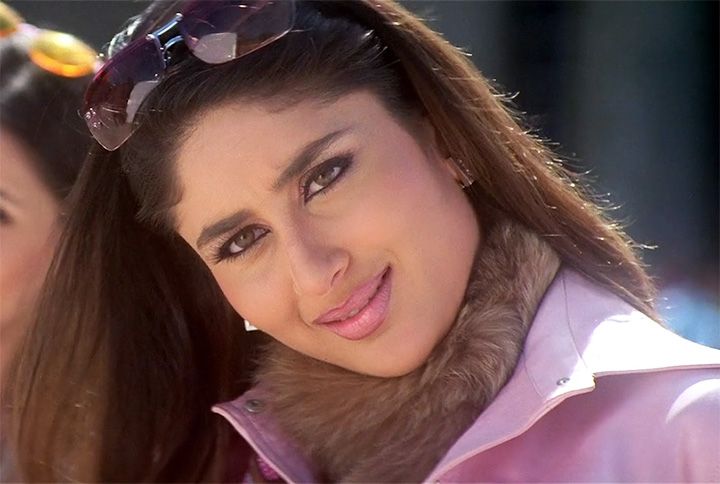I don’t know if it was just me, but when Kabhi Khushi Kabhie Gham first released, there were a lot of Poo haters around. So many people I knew judged the character for being vain, cocky, obnoxious. Nevermind that those same people have been consuming male characters exactly like that for years without batting an eyelid – the famous Raj, for example, is a model of those very characteristics, and look how we all react to him.
It’s easy to see why Poo could be disliked (or, at best, liked ironically) at the time. She embodied everything a woman wasn’t supposed to be: she wasn’t the sanskaari, “decently dressed”, elder-respecting, coy woman we were used to seeing in our movies. Instead, she was a confident woman comfortable with her sexuality, and willing to go and get what she wanted. She had her faults, but she was unabashedly her. This was discomfiting – and it was easier to slot her as ‘obnoxious’ or OTT, rather than ask ourselves why this woman was so unsettling to us.
Poo may not have been written to be a feminist icon, but she challenged cultural norms in a way not many did. She’s perhaps the first mainstream Indian character to show women that it’s okay to put yourself first, live according to your own rules and refuse to take shit from anyone else.
K3G was one of the first times I can truly remember thinking that an Indian woman could be more. As a young girl who mostly kept her head down and her mouth shut, watching Poo confidently strut around her college campus was truly remarkable to me – not just the fact that she was ‘ruling’ over the men, but also that they were white men. It’s actually quite powerful, even more so because Poo was far from what the Indian woman was supposed to be. After all, Hindi films associate westernisation with deviancy, and many films involve “rogue” Indian people coming back to the “right” path after embracing their Indianness. (Even in the recently-released Befikre, the girl who constantly insists she’s French is meant to finally become relatable the minute she starts making aloo parathas.) Yet here was Poo, as un-Indian as they come – and still killing it.
To be fair, there’s a lot about Poo that’s problematic. She’s a bully, she’s demeaning, she’s cliquey. If anything, though, that contributes even more to her being a great character. The point, after all, is not to write women who are only “strong” or perfect or role model material, but to show that they, too, are ultimately human – with very real, sometimes problematic aspects to their personality. It’s the only way to break away from creating two-dimensional women characters who are there only as support to their male counterparts.
Today, we throw around Poo phrases in our daily conversation, but (at least for me, personally) this subconsciously stems from embracing everything this character stands for and what it means for me as a woman.
Because it’s not always all about loving your parents. Sometimes it’s also about challenging cultural norms and subverting the patriarchy.

